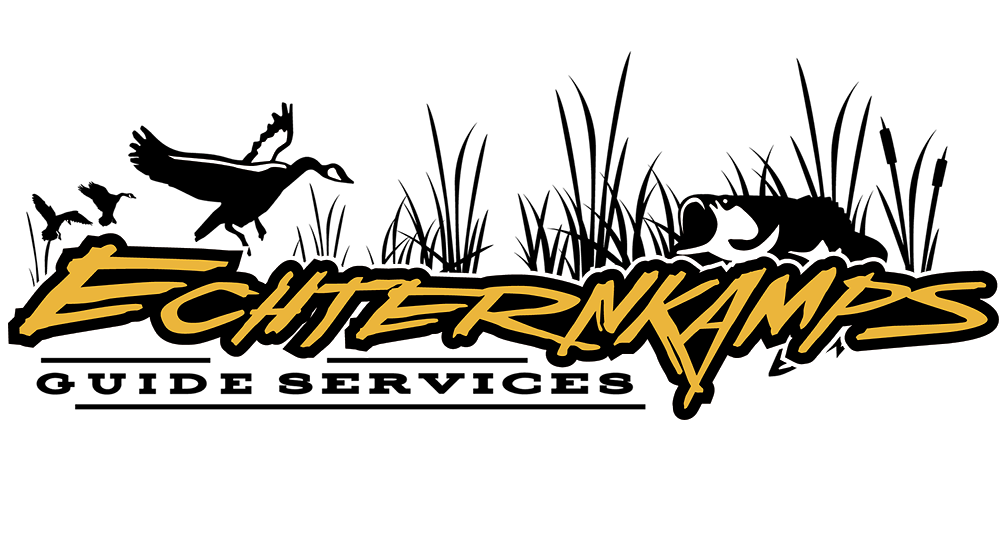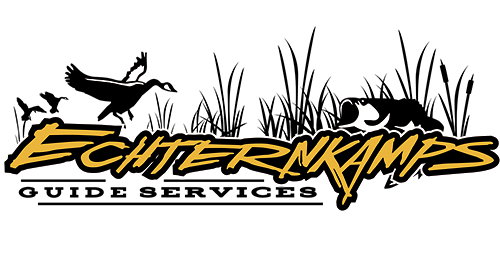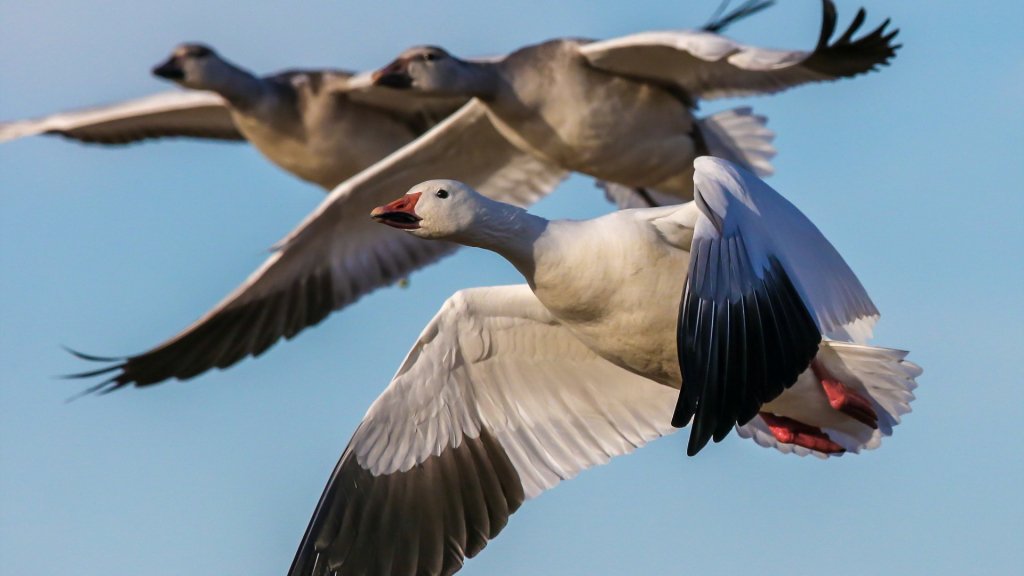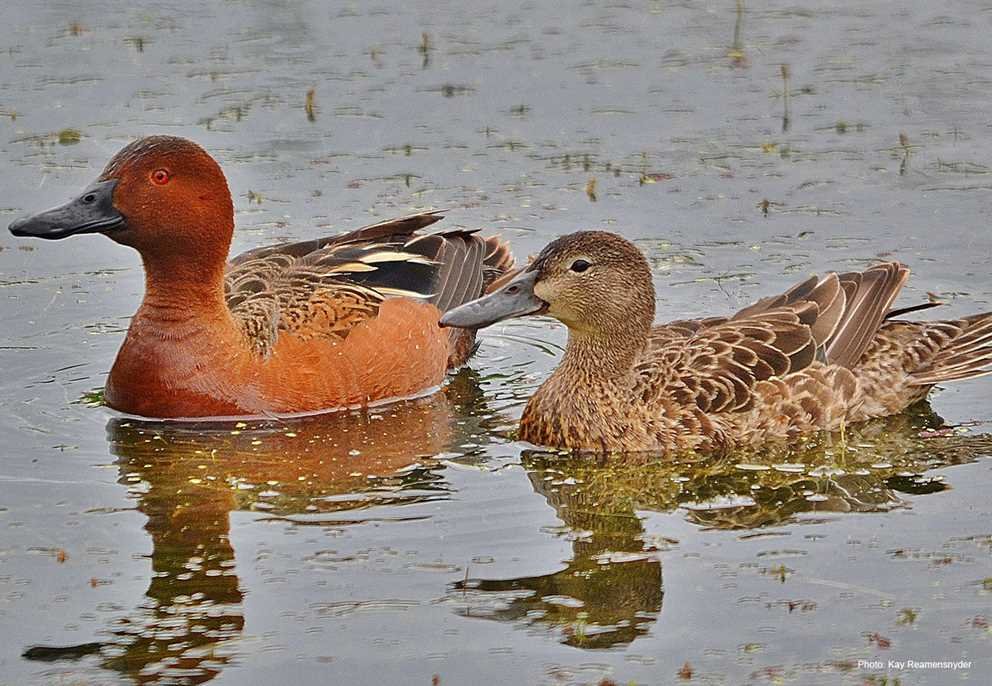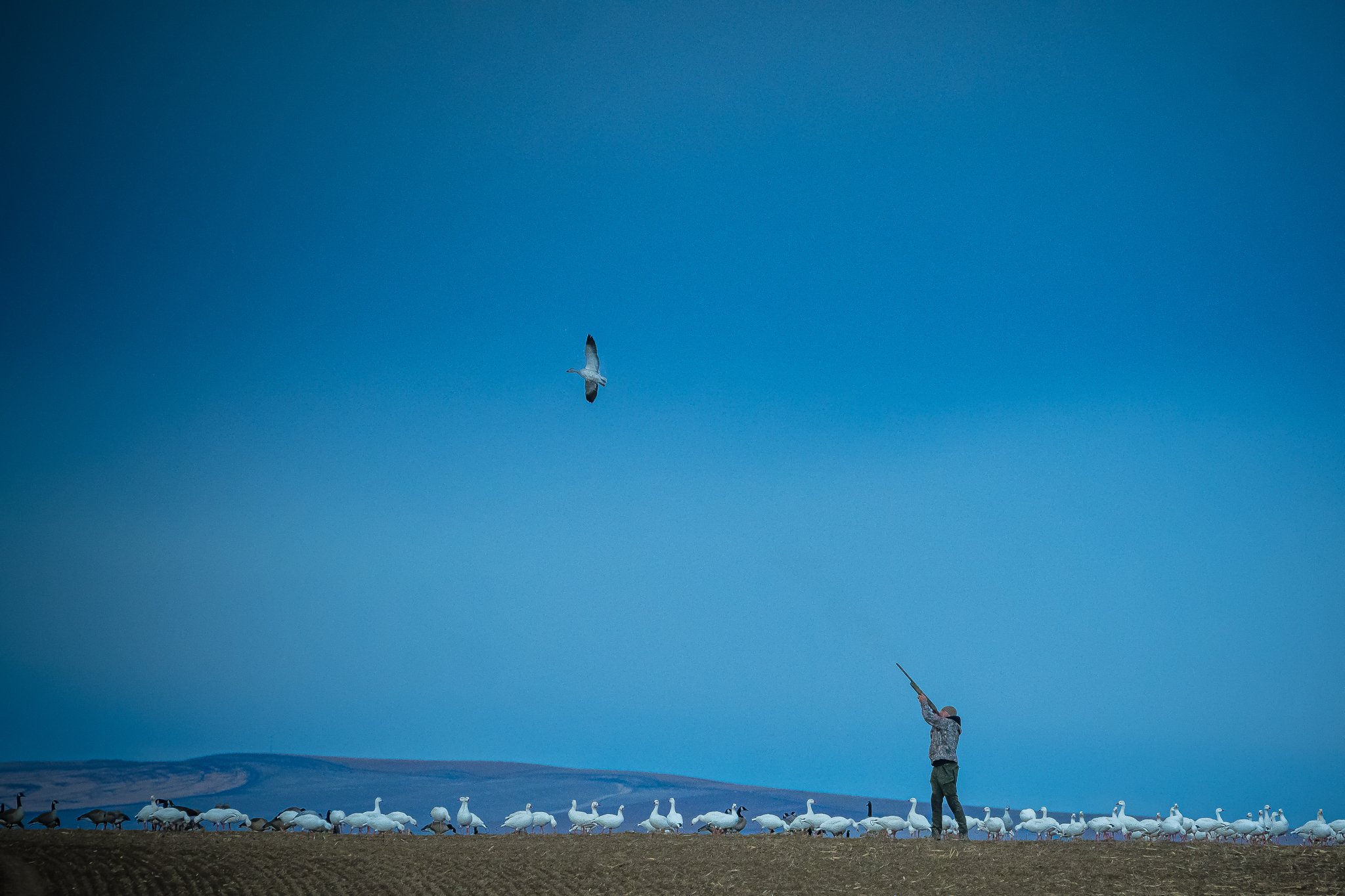
What We Hunt
The bulk of our guided waterfowl hunts is aimed at Canadian geese, snow geese, and ducks.
We also provide guided hunts for doves, and pigeons.
Mallard
The mallard is one of the most recognized of all ducks and is the ancestor of several domestic breeds. It’s also one of the ducks frequently being called into our decoys by Eastern Washington State Guides. Have you ever hunted in a tornado of ducks?
The drake mallard's white neck-ring separates the green head from the chestnut-brown chest, contrasts with the gray sides, brownish back, black rump, and black upper- and under-tail coverts. The speculum is violet-blue bordered by black and white, and the outer tail feathers are white. The bill is yellow to yellowish-green and the legs and feet are coral-red. There’s something about the colors found in the eastern Washington mallard drakes our guides and clients love. Maybe it’s a belly full of corn, our guides regularly find duck stomachs stuffed with corn from adjacent fields!
The greenheads on males are strong visual ID indicators. We recommend looking for ‘green heads’ during your shot selection and decision-making process to ensure more drakes than hens are taken. Washington State Regulations allow for 5 mallard drakes and 2 hens to be harvested daily.
Learn more about Where We Hunt >
Canada Goose
Depending on which Eastern Washington guide you ask, they’ll each have a favorite waterfowl species to hunt. The majority of our guides love calling in honkers over agriculture but also get plenty over water. Yes, we’ll get them to land in your face!
Both sexes of Canada geese have a black head and neck except for broad white cheek patches extending from the throat to the rear of the eye. The geese in Eastern Washington are generally fatty’s, exhibiting their well-known characteristic “honking” call. Casually, male geese are often referred to as ‘honkers’, female lessors are referred to as ‘cacklers’; no, we didn’t come up with that reference but do have a growing lingo library by our guides. We are equal opportunity harvesters of male and female Canadian geese, always following Washington State DFW Regulations.
In addition to getting big, Canada geese also can live a long time. One banded giant goose was recorded at 30 years and 4 months; holding the record for waterfowl. Congrats to that smart ol’ goose! We hope the dumb ones are headed to Moses Lake!
Did you know two of the Eastern Washington Guides finished in the top 5 of the 2021 World Goose calling championships? Meet our guides!
Snow Goose
Greater snow geese are grubbers, feeding on roots, rhizomes, and shoots of bulrushes and salt-marsh cordgrass. They also make extensive use of agricultural fields found adjacent to wintering areas in the greater Moses Lake Area, particularly around the Columbia National Wildlife Refuge. Over the past few years, the numbers of Snow Geese coming off the Refuge have exploded. Eastern Washington is seeing our best snow goose numbers ever in 2021-2022, we expected them to improve.
Lesser snow geese have two color phases: a dark (blue) plumage and a white (snow) plumage. The sexes are similar in appearance in both phases, but the female is often smaller. Snow geese are very vocal and can often be heard from more than a mile away.
Our guides often will set up a large spread with a handful of air-powered windsocks mixed in, along with calling to decoy large sheets of snow geese. Snow goose hunts in Eastern Washington are ridiculously fun! A few years ago most waterfowlers would’ve never considered it.
Book a snow goose hunt >
Northern Pintail
There is no shortage of Northern Pintails around Moses Lake but there is a limit. Washington State DFW regulations daily bag limit is two. This makes species identification important! Our guides do our best to call out “Pennies” so be sure to identify your duck before shooting!
Northern Pintails are distinguished by their long black pointed tail, brown head with white stripes coming up from the neck, around the back of their heads. Their long necks and tail give them a larger profile than a Mallard however Pintails typically have smaller bodies, slightly less breast meat. In-flight drakes have iridescent steel green wing patches bordered with light bands. Hens have a duller wing patch bordered with light bands.
Pintails are extremely fast fliers, fond of zig-zagging from great heights before leveling off to land. Seeing our Eastern Washington Pintails likely with a belly full of corn is extremely fun to see committed to a decoy spread; sometimes it appears they’re dive-bombing to land.
Book a duck hunt >
Green-Winged Teal
Green-winged teal is the smallest of our North American dabbling ducks with a short neck and small bill. Male green-winged teal has a gorgeous reddish-chestnut head with an iridescent green to purple patch extending from the eyes to the nape of the neck. Teals are a part of your total daily bag limit.
The smallest and one of the most common of our ducks. Their tiny size gives the impression of great speed, but mallards can fly faster. The Teals flight is often low, erratic, with the entire flock twisting and turning as one unit.
Book a duck hunt >
Cinnamon Teal
Unlike their troublesome Green-Winged cousins, cinnamon teal has a cinnamon-red head, neck, breast, and belly. They have an iridescent green speculum, which is separated from a bluish shoulder patch by a white stripe. The back, rump, upper tail coverts, and tail are a dull brown and the under-tail coverts are black. They have a distinctive red eye, a black bill and yellow legs and feet. Female cinnamon teal is often confused with female blue-winged teal. They have a duller blue shoulder patch, an overall rustier color, and are more heavily streaked.
We don’t see many Cinnamon teal in Eastern Washington, maybe because they’re faster flyers than their Green-Winged cousins? We make no judgments. Cinnamon teals also fly faster than Mallards, often low, erratic, with the entire flock twisting and turning as one unit.
Book a duck hunt >
American Widgeon
American wigeon are a medium-sized dabbling duck, and males have a distinctive white patch on their head that historically gave them the nickname “baldpate.” Widgeons are known to be more aggressive when competing for food equally at home stealing food from diving ducks in deeper water, grazing on grasses around Potholes or feasting on corn from surrounding cattle farms.
We love when Widgeon are flying! A good number of the privately-leased property available exclusively to Eastern Washington Guides are cattle farms. The combination of moist-soil wetlands and access to agricultural food during winter keep an abundance of Widgeon in the greater Columbia Basin and Moses Lake areas to hunt.
Book a duck hunt >
Eurasian Widgeon
Eurasian wigeons often can be found in the company of American Wigeons. The male's bright russet-red head, topped with a cream stripe, and its gray back and sides, distinguish it from its American cousin. Females of the two species are so similar that separation in the field is unreliable. However, adult female Eurasian wigeons have two color phases: gray and red.
We don’t get many Eurasian Widgeon around Moses Lake so they’re kinda rare. When we do, it’s early season and in the company of American Widgeon. The males have a bright rusty-reddish head with cream stripe and gray back are clearly distinguished from their Widgeon cousin.
Wood Duck
Arguably the most ornamental of the resident and migratory ducks around Moses Lake. Male wood ducks have a slicked back head, iridescently popping in green and purple with a white stripe framing its head from eye to crest. Female wood ducks have a gray-brown head and neck with a brownish, green, glossed crest. A white teardrop-shaped patch surrounds the brownish-black eye. The female touches of iridescent green of their own with a light shimmer of it on their back.
Our guided hunts find wood ducks most commonly during the early season however we get them all year depending on the weather. A collection of our guides on the other side of the “which duck breast tastes the best” debate are big fans of wood duck breasts as the tastiest of the fowl.
Book a duck hunt >
